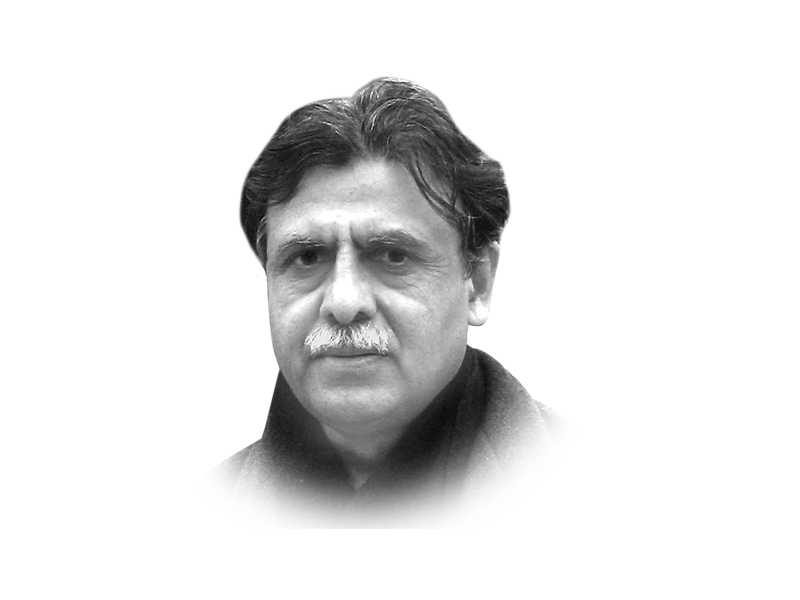
Bedok, a suburb in the eastern part of Singapore, is the place I am lodged in. It seems familiar as the father of the nation, Lee Kuan Yew, fondly talked about it in his memoirs. As a child, he used to visit his maternal grandparents living here on a bullock cart. Today, the area is connected through a fast-moving metro rail and efficient road transport with all critical nodes of the city. Across the road is a huge water reservoir in the midst of a fairly large park. The reservoir speaks of the relentless effort on part of Singaporeans to efficiently harness clean drinking water for domestic use in a water-deficient country. Part of the reservoir, with a circumference of over four kilometres, is open for water sports as long as such activities take place under the stringent pollution control regime.
Water management in Singapore is a distinct example of an efficient public sector project. The provision of clean water for human consumption had been an issue for the survival of the country. Much of the water was brought from neighbouring Malaysia under a 50-year agreement signed in 1961 which expired in 2011. Thereafter, another agreement was signed in 2011, which will expire in 2061. Through a well thought-out approach, the country is now able to cater to its water needs with less reliance on imported sources. New sources of supply were developed and heavy investments were made in desalination and extensive reuse of waste water while at the same time enhancing the water catchment infrastructure. There has also been investment in research and technology development. A proper price tag has been attached to the precious resource through a progressive tariff regime. Policy design also focuses on the institutional framework. Singapore’s Public Utility Board has been given the task to manage the entire water cycle. Earlier, it was responsible for managing water supply, gas and electricity. Additional responsibility of sewerage and drainage was also entrusted to it, which it performed effectively. Desalination plans were only taken up when their cost became bearable.
Singapore is one of the most densely populated countries in the world. Despite a skyline dominated by high rise buildings, availability of land has been an inherently restricting factor. This limitation has been partially off-set by reclaiming nearly one-fifth of land along its shore. Reclaimed land has been put to productive use with great value-addition. The Changi Airport, for example, which handles around 6,000 flights to over 200 destinations every week with an annual handling capacity of over 55 million passengers, has been built on imported rock and earth-filled reclaimed land. Another landmark in this regard is the Jurong Island which is now a leading hub of petroleum business and world class refineries. It has grown three times its original size from 10 square kilometres to over 30 square kilometers through strenuous reclamation efforts.
In the early 1970s, the country focused on building a container port. This was mainly on account of the critical importance of trade to Singapore's development. It soon became the world's leading transhipment hub, providing frequency and link for major shipping lines in the Asia Pacific region. The earlier leadership of Singapore was deeply aware of the country's vulnerabilities. Its small size and lack of resources impelled the leadership to make best use of whatever it had. Foundations were laid to nurture it as a trade and investment centre, a money spinner that could provide an adequate financial base. Creative solutions were devised to overcome vulnerabilities and add to its strength in various areas. Here, Singapore’s civil service played a critical role. Recruitment, placement and retention of civil servants are guided purely by merit with complete autonomy provided through a well laid-out institutional framework. There is a strong premium on integrity with zero tolerance for graft and sleaze. Civil servants are retained through market-driven salaries while their performance is viewed through clear benchmarks. Management practices in the public sector have been corporatised. Traditional government departments have been transformed into statutory boards. Singtel, for instance, was a telecom authority which was turned into a corporate entity and is now publicly listed.
Talent hunt begins at an early stage and prospective civil servants are identified through a scholarship scheme at an early stage before grooming them through different stages till they joins the official cadres. Academic excellence alone is not enough unless an aspirant has analytical skills along with a strong problem-solving ability.
The story of Singapore is one of challenges that were successfully turned into opportunities. Irrespective of the scale, there are lessons that Pakistan can learn from it. For instance, downstream at Kotri on the Indus, over 10 million acre feet (MAF) of water fall into the sea. In the water accord of 1991, it was agreed to commission experts to work out the actual flow required downstream as a lifeline for the mangroves of Thatta and other deltaic areas. There had been conflicting opinion regarding this requirement, which ranged from 3.5MAF to 10MAF. There has been no headway on this despite the lapse of so much time. There is need to ponder over how best we could leverage our resource endowment. For example, we are blessed with enormous hydel potential but our overreliance on imported fuel underscores our skewed thinking and distorted priorities for the past so many decades.
Published in The Express Tribune, December 16th, 2014.
Like Opinion & Editorial on Facebook, follow @ETOpEd on Twitter to receive all updates on all our daily pieces.
COMMENTS (10)
Comments are moderated and generally will be posted if they are on-topic and not abusive.
For more information, please see our Comments FAQ

























1714129906-0/Clint-Eastwood-(1)1714129906-0-270x192.webp)













1714024018-0/ModiLara-(1)1714024018-0-270x192.webp)









The success of singapore lies in the fact that very early on the Chinese decided to carve out a future for themselves, independant of Muslims and indians involvement. Malaysia became land of the Muslims. Indians are second grade citizens. Indian guest workers are third grade with no human rights. Some cases are still with courts regrading killing of indian workers by singapore police.
@Alfa Romeo:
Get your facts correct . It is not christian country , It is secular and buddhist majority country. If you don't know , keep quiet
One more main reason for Singapore success is they are not bigoted religious thugs...!! you can see two or three religious worshiping place in same street next to each-other and most of the people visiting all the three religious places at same time and offering prayer...!!
An entirely misleading article. Singapore (or dubai) is hardly a model for the third world.
I have travelled frequently to Singapore in past decade and half and has seen how it is a turning in to a sour dream for native singaporeans.
you see singapore's growth is fuelled by its status as tax haven, thus a lot of money pours in to singapore, and it has become a financial nerve center. This has meant a huge influx of immigrants searching for tax shelters for their huge wealth. This also has boosted Singapore dollar and also inflation.
The residential prices in Singapore are notoriously expensive. Singapore is easily the most expensive tourist destination in the world now, with even the cheapest hotels costing upwards of US$100/night.
For a person who has travelled to Singapore in past decade frequently - effects of it is obvious. If you have any doubt speak to native singaporeans (i.e. taxi drivers, waiters etc.) their life has become unbearable.
In the past decade poverty in singapore actually went up (not down) to 28% in 2013, from just 16% in 2002. Some estimates say in another decade 40% of singaporeans will be poor at this rate.
Education costs so heavily now, that natives are almost left out. A car can only be bought by very rich, as the license to own a car sells for over S$75,000. Owning a house in singapore also is a nightmare as the costs are some of the highest in asia.
So, the sons of original fishermen of Singapore are today reduced to working overtime, and making ends meet.
This is lost on a tourist, unless he scratches beyond the surface. This is hardly a model that populous countries would want to follow.
Need to utilise our resources ,get income and tax , then spend it on the masses on equal basic.
Have been to Singapore quite a few times. THE cleanest city in Asia. Very very efficient. Runs like clockwork. Stayed in a Orchard Road hotel. They have night tours at the zoo ! Changi airport is always among the top 5 in the world. Visited Raffles too. Great place to visit and stay. Why can't Karachi be modeled after Singapore??